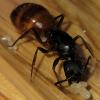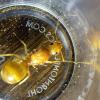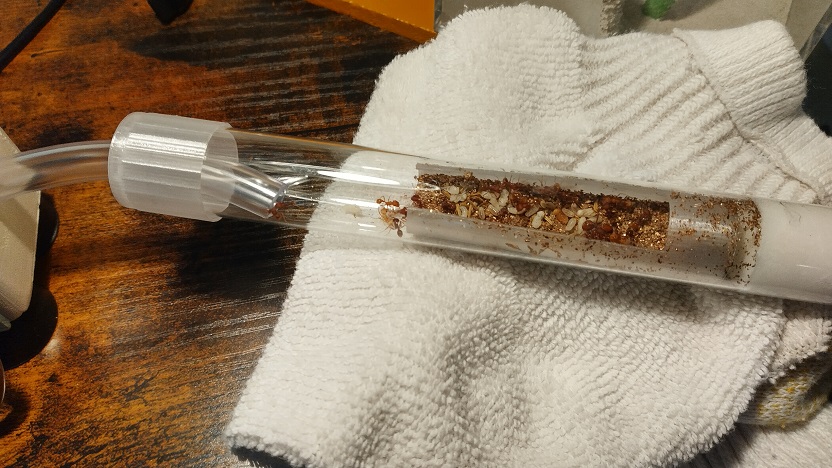To be clear I don't need education about test tubes. I'm fully familiar with what they do, how they work, what their pros are, AND what their cons are. I am actively making the choice that the pros don't outweigh the cons anymore.
I would argue that the only thing test tubes are better than is a full size nest. i.e. they only look like a good option because the most widely available alternatives are so unsuitable to a nuptial queen. But the same small, controlled environment can be accomplished in any number of ways, and requires nothing but a small chamber in the nest. And well-designed non-tube formicariums allow you to MAINTAIN that environment without having to completely disrupt the colony, which is exactly what a test tube demands. It has a quickly ticking expiration clock the moment you occupy it, which is an enormous flaw and IMO 100% justifies considering the alternatives.
I think that most people in the hobby rely on tubes to be cheap ways to reliably start mass numbers of queens, but that doesn't say anything about the actual suitability of the design in a vacuum. On a colony by colony basis it's a bad and often awkward choice, IMO. I don't want to start 20 queens at once, I want to start one, and I'm willing to pay more for better features in that experience. To start with, I want to give her the time to move beyond the founding phase before she's forced to completely relocate, and a test tube rarely provides that opportunity in my own experience. For queens who require a season's gap before they lay it NEVER does, at least in my climate.
You can't "add" onto a test tube. The queen ALWAYS has to abandon the chamber once it's dry (and 99% of the time that means you the keeper have to actively chase/shake her out). A good non-tube starter nest lets you expand at your own pace, and leaves it to the ants to make the decision about when (if ever) the queen shifts locations.
Which is the real point of this thread. Not to debate nests, to list RETAIL options other than THA and Por Amor.
I'll add onto that list and say I've also seen "stick" formicariums at places like Aus Ants that would also be a good fit for many species to start out in, with the smallest models. I just don't tend to like the stacked lucite/acrylic designs, which they usually are.
Edited by m99, May 8 2023 - 2:26 PM.
























